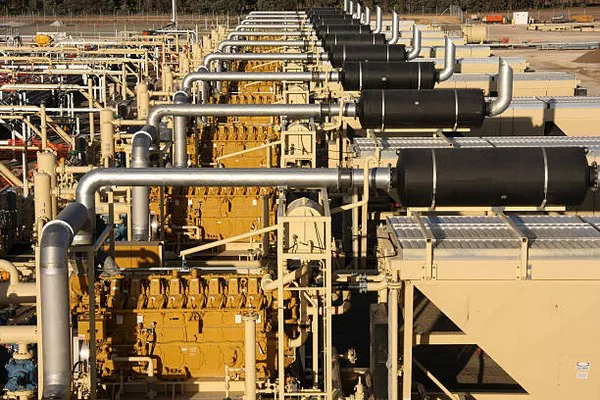Refrigeration systems play a pivotal role in our daily lives, from preserving perishable food items to maintaining comfortable indoor temperatures. At the heart of these systems lies a critical component known as the compressor, which is responsible for maintaining the flow of refrigerant and facilitating the heat transfer process. In this article, we will delve into the inner workings of a compressor in a refrigeration system, exploring its functions, types, and the principles that govern its operation.
The Fundamental Role of Compressors
Compressors are central to the operation of refrigeration systems, as they are responsible for several essential functions, including:
Compression: As the name suggests, the primary role of a compressor is to compress the refrigerant gas, thereby increasing its pressure and temperature. This compressed gas carries a higher heat-absorbing capacity, making it suitable for the heat exchange process within the system.
Circulation: Compressors ensure the continuous circulation of refrigerant throughout the system. The high-pressure gas is pumped through a series of components, including condensers, evaporators, and expansion valves, where it undergoes phase changes to absorb and release heat.
Maintaining Refrigerant Flow: Compressors maintain the flow of refrigerant, ensuring a consistent cycle of compression and expansion. This circulation is vital for maintaining the desired cooling effect within the refrigeration system.
Types of Compressors
There are several types of compressors used in refrigeration systems, each with its own set of advantages and limitations. The three most common types are:
Reciprocating Compressors: These compressors utilize a piston-cylinder arrangement to compress the refrigerant. The piston moves up and down inside the cylinder, creating suction on the downstroke and compression on the upstroke. Reciprocating compressors are known for their high efficiency and reliability, making them suitable for both residential and commercial applications.
Rotary Compressors: Rotary compressors operate by using a rotating mechanism, typically a roller, vane, or screw, to compress the refrigerant gas. These compressors are compact, quiet, and have fewer moving parts, making them a popular choice for air conditioning units and smaller refrigeration systems.
Centrifugal Compressors: Centrifugal compressors work on the principle of centrifugal force to accelerate and compress the refrigerant gas. They are commonly found in large-scale industrial applications and are known for their high capacity and efficiency. However, they require significant energy input and are typically not suitable for small-scale or domestic use.
The Compression Cycle
To understand how compressors work, it is essential to grasp the compression cycle within a refrigeration system. The cycle typically involves four main components: the evaporator, compressor, condenser, and expansion valve.
Evaporator: In the evaporator, the low-pressure and low-temperature refrigerant absorbs heat from the surroundings, causing it to evaporate into a low-pressure gas. This cooling process creates the desired cooling effect within the refrigeration system.
Compressor: The low-pressure gas is then drawn into the compressor, where it is compressed, raising its pressure and temperature. This high-pressure gas is now ready for the next stage of the cycle.
Condenser: The high-pressure gas is sent to the condenser, where it releases heat to the surroundings, causing it to condense into a high-pressure liquid. This transfer of heat is crucial for maintaining the desired cooling effect within the system.
Expansion Valve: The high-pressure liquid then passes through an expansion valve, where it undergoes a rapid expansion. This expansion reduces both the pressure and temperature of the refrigerant, allowing it to return to the evaporator as a low-pressure gas to start the cycle anew.
Principles of Operation
The operation of a compressor is governed by several fundamental principles of thermodynamics and fluid dynamics:
Boyle’s Law: This law states that the pressure of a gas is inversely proportional to its volume, provided the temperature remains constant. In the compression process, the compressor reduces the volume of the refrigerant, causing its pressure to rise.
Charles’s Law: Charles’s Law asserts that, at a constant pressure, the volume of a gas is directly proportional to its temperature. As the compressor compresses the gas, its temperature increases significantly.
First Law of Thermodynamics: Also known as the law of conservation of energy, this principle states that energy cannot be created or destroyed, only transferred or converted from one form to another. In the compression process, the compressor imparts energy to the refrigerant gas in the form of increased pressure and temperature.
Bernoulli’s Principle: This principle relates the speed of a fluid to its pressure. When the refrigerant flows through the compressor, its velocity increases, leading to a decrease in pressure. This allows for the efficient compression of the gas.
Conclusion
Compressors are the heart of refrigeration systems, responsible for maintaining the circulation of refrigerant and facilitating the heat exchange process. Their operation is governed by fundamental principles of thermodynamics and fluid dynamics, making them a crucial component in maintaining the desired cooling effect in various applications, from household refrigerators to industrial cooling systems. Understanding the workings of compressors is essential for designing efficient and reliable refrigeration systems that meet the diverse needs of today’s world.

